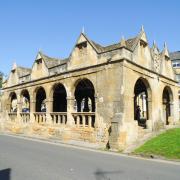Environmental charity Earth Trust, working with Church Farm Partnership and The Hurst Water Meadow Trust, have embarked on a significant endeavour called ‘River of Life’ Spanning 46,000 square meters - equivalent to six football pitches - it stands as the largest wetland habitat creation of its kind along the banks of the River Thames. This special project is not just a restoration effort but a demonstration of what can be achieved in rehabilitating canalised rivers and creating wetland habitats for the benefit of biodiversity, and people’s access to these landscapes.
Restoring natural hydrology
One of the core objectives of River of Life is to restore the natural hydrology of the River Thames and its floodplain. Over the centuries, human activities such as agriculture, urban development, and industrialisation have significantly altered the natural flow and structure of many rivers across the UK, straightening the kinks and turns, blocking inlets and ponds. These changes have led to a decline in water quality, reduced habitats for wildlife, and increased flood risks.
By reestablishing natural watercourses, creating new ponds, and reconnecting the river to its floodplain, the aim is to reverse some of these adverse effects. To not only improve water quality but also create dynamic and resilient habitats capable of supporting a wide range of species.

Central to the River of Life initiative are a series of new and expansive ponds and backwaters. Wetlands are among the most productive ecosystems on the planet, providing critical services such as water filtration, flood protection, and carbon sequestration. The newly created areas serve as crucial habitats for a plethora of species, fostering biodiversity and supporting intricate ecosystems. The still and slow-moving waters of the ponds and backwaters provide breeding grounds for fish, amphibians, habitats for aquatic insects, and feeding areas for birds and mammals.
Enhancing biodiversity
Biodiversity is a key indicator of the health of an ecosystem and in just a few years since it was created, River of Life is enhancing the ecosystem by creating a variety of interconnected habitats that ensures the needs of different species are met throughout their life cycles. It is now home to an array of wildlife, including otters, kingfishers, dragonflies, and various species of fish. The increase in habitat diversity has also attracted migratory birds, turning the area into a crucial stopover for species such as lapwings and redshanks.
Enhancing water quality
One of the most significant benefits of the project is its impact on water quality. The ponds and inlets slow down water flow, allowing sediments and pollutants to settle before the water re-enters the main river. This natural filtration process improves the overall health of the rivers, benefitting both wildlife and the human communities that rely on these water sources.
Capturing carbon
Wetlands are often under-appreciated for their role in carbon capture. They act as carbon sinks, capturing carbon dioxide from the atmosphere and storing it in plant biomass and soil, helping to mitigate the impacts of climate change by reducing the overall concentration of greenhouse gases.

Natural flood defences
Nature-based solutions can aid in flood mitigation: wetlands have the capacity to absorb and store excess water, acting as a buffer during periods of heavy rainfall. A cost-effective and sustainable alternative to engineered flood defences, which often have limited lifespans and can be expensive to maintain.
Collaborative efforts
The success of River of Life is built on collaboration - local authorities, landowners, conservation organisations, and volunteers were all involved. A critical aspect is its harmonious integration with the surrounding farmland, showing how environmental restoration can coexist with agriculture, without compromising productivity, that’s proving a win for wildlife and farmers.
Grassland management is a feature of the project and the restoration of the floodplain meadows involved re-seeding the area with native species of wildflowers and herbs for hay cutting, providing floral diversity all summer for pollinators, and then grazing land for cattle, another key contributor to the conservation efforts.
Community engagement and education
But River of Life is not just about ecological restoration; it’s also about inspiring and educating the public about the importance of wetlands and water conservation.
Earth Trust organises events, workshops, and guided tours to the project, to involve the local community and provide opportunities for people to connect with nature, learn about the benefits of wetlands, and understand the role they can play in protecting these vital ecosystems.

Monitoring and research
River of Life is more than a restoration project; it is a living laboratory. Earth Trust has a team of volunteers who regularly monitor the species that inhabit the newly created habitats, and collaborates with academic institutions and environmental organisations to carry out research which focuses on biodiversity recovery, water quality improvements, and carbon capture. By generating robust scientific data, the project is not only demonstrating the benefits of wetland restoration but also providing a blueprint for others to follow.
Looking to the future
Beyond its ecological and environmental benefits, River of Life offers a haven for people. The newly created wetland areas are magical places for visitors to explore. Freely accessible riverside walks invite people to immerse themselves in the beauty of nature, with dragonflies skimming over the water’s surface and birds nesting in the reeds.
The lessons learned from this inspiring project are a factor in helping to show that the UK’s waterways can be vibrant and resilient in the face of environmental challenges. And by fostering a sense of wonder and appreciation for the natural world, this newly established tranquil setting aims to inspire a new generation of environmental stewards.




























